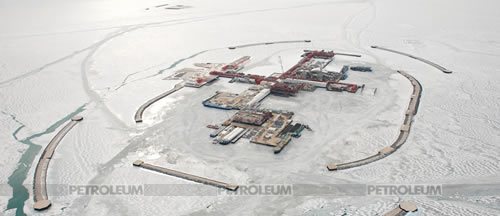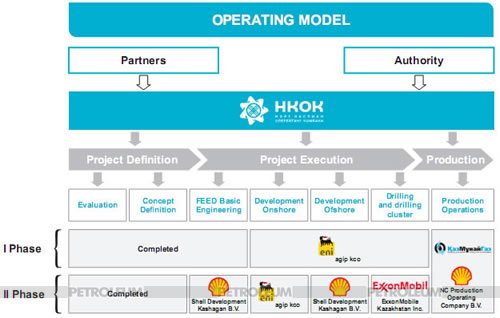Projects
The Project of the 21st Century
Preparations for the launch of commercial extraction at the Kashagan field is proceeding to plan, production is to begin on schedule, this was announced by Umberto Carrara, managing director of Agip KCO, which is responsible for implementing Phase I of the North Caspian Sea Project.

As has already been reported, the timescale for the launch of production at the field discovered in July 2000 has been changed a few times. It had initially been planned that industrial development of Kashagan would begin in 2005, but circumstances made it necessary to postpone the launch three times, on the last occasion from 2010 to the fourth quarter of 2012. And the Kazakh government has said in no uncertain terms that there will be no further delays.
U.Carrara said the main reason for the delay was the unique nature of the project. The members of the project, including world-renowned oil companies, had simply never encountered such challenges in their many years of experience. Kashagan is a gigantic field in the north of the Caspian measuring 75 by 45 km. Its size is comparable with Greater London with outskirts. Its reserves total more than 35bn barrels, and is the largest deposit discovered anywhere in the world over the past 40 years.

But oil production entails great difficulties – the oil stratum lies at an average depth of 4.2 km, it is under unusually high pressure (about 750-800 atm), and contains an unusually high level of hydrogen sulphide and mercaptans (15%). The project is made still more difficult by the fact that the Caspian is a closed and shallow body of water. The depth of the sea in the area of D-island, where production is to begin, is just 3-4 metres. So it is not possible to use traditional drilling and production techniques such as reinforced concrete structures set on the seabed or steel platforms on piles, since in winter the sea freezes through nearly to the bed and the springtime ice slices through the huge piles like matchwood. In order to protect all the industrial facilities and structures, they are erected on artificial islands. The largest of these is D-island, the construction of which began in 2003. Piles are driven into the seabed along the perimeter of the island, between which the space is filled with stones. Some 7m tonnes of limestone was delivered and deposited by barge. A specially installed geomembrane measuring 77,000 square metres protects the sea from any possible spills. The island is protected from ice hummocks by special protective barriers.



